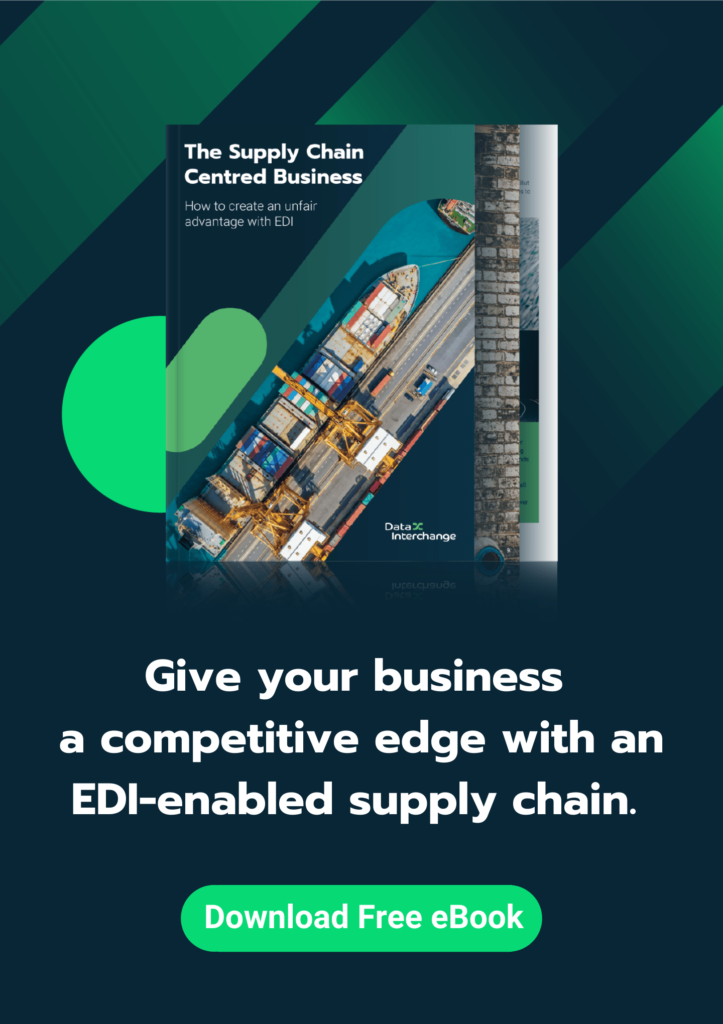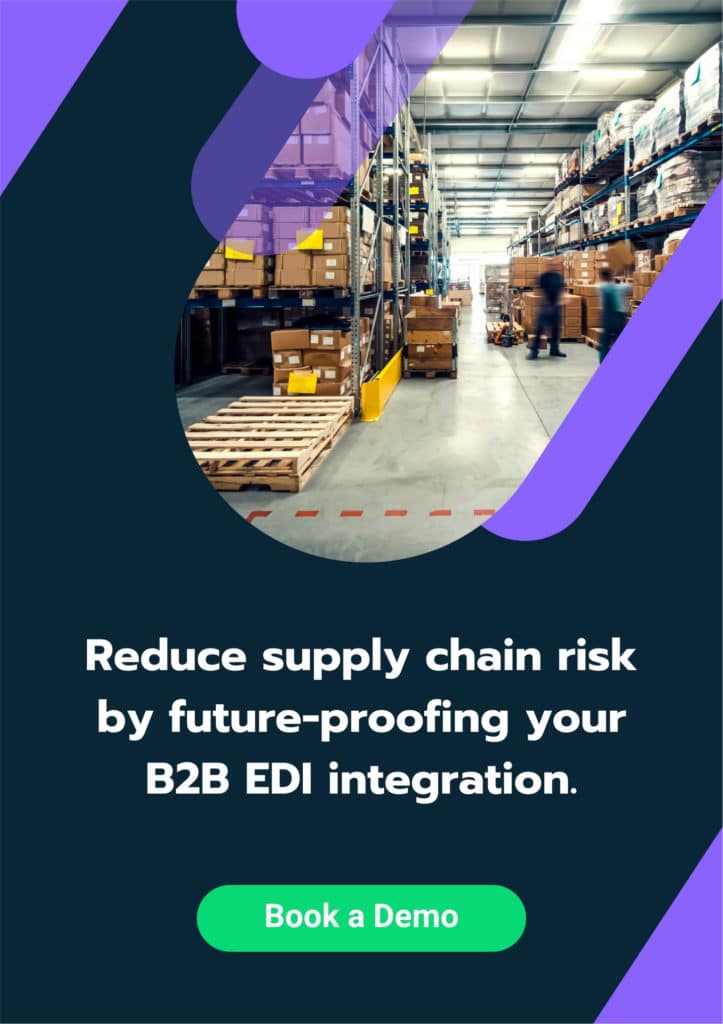B2B EDI Integration Best Practices in 2023
EDI is still rapidly changing in 2022. Finding and implementing the right solution can deliver significant benefits to businesses, including:
- Speeding up business cycles by as much as 61%
- Reducing transaction errors by at least 30-40%
Despite this, B2B EDI integrations are still complex, siloed, and often out of reach, with as many as 41% of companies still falling short with EDI implementation. Smooth integrations are essential to businesses, and stalling communications can be fatal in the context of global supply chains.
Fortunately, more modern EDI integration solutions are here. This includes Data Interchange’s cloud-based and managed approach to EDI-as-a-Service. Here, we’re going to consider EDI as it stands, and the best practices that can ensure inclusive integrations that allow businesses to enjoy the most effective benefits EDI has to offer.
Suggested reading: If you want to learn more about how effective EDI can deliver a competitive advantage, take a look at our eBook — The Supply Chain Centred Business
Standard EDI integration (VAN vs point-to-point)
Standard EDI integrations have been changing supply chain best practices since their inception in the 60s. When thinking about the question “What is EDI?”, it’s helpful to consider the two primary subcategories of standard EDI integration:
- Point-to-point EDI: Most commonly used by companies who deal in high numbers of daily transactions within stable supply chain relationships, point-to-point EDI (a.k.a direct EDI) sets up a direct line of communication between businesses. Agreed-upon protocols between supply chain partners standardise formatting in a cost-effective solution that keeps full control in-house. However, point-to-point EDI can be difficult to set up and maintain, particularly when it comes to new supply chain relationships.
- EDI via VAN: The most common type of EDI solution on the market, EDI via VAN introduces cloud-based flexibility by facilitating communication through ‘mailboxes’ which are secured within private networks overseen by EDI specialists. This makes it far simpler to onboard new supply chain partners and reduces some of the strain of management and onboarding. However, it’s not a fully managed or “friction-free” solution.
Both of these standards have found their place and have without question assisted businesses in paving the way for the type of supply chain communication they need. Despite this, B2B integration continues to be a problem.
Onboarding supply chain partners with limited EDI experience, as well as inherent complications and the numerous existing EDI formats can all still cause significant setbacks which bring integration to a halt. For example, the need to support various standards and protocols before partners can access VAN can mean onboarding that takes as long as three to six months.
Web EDI: Bringing EDI to the uninitiated
One of the largest challenges with both point-to-point EDI and EDI via VAN is the level of EDI expertise required. This applies to you and your supply chain partners. Even if you understand EDI, it’s hard to count on that level of expertise across every supplier relationship.
Web EDI is a modern development designed to provide EDI access to businesses without EDI experience. Fundamentally, Web EDI is a web portal that allows for the manual input of information, which is then shared via EDI. Often used in tandem with an EDI via VAN solution, Web EDI is an important component of modern EDI, and bring benefits including:
- Simplicity across supply chains
- Streamlined partner networks
- Semi-automated creation of B2B documents
- Access to real-time information
- And more
Specifically, the position of Web EDI within web browsers means that even unversed partners can get on board, and start communicating, without worrying about complex software integrations. This can save costs, time, and energy meaning that, on the surface, Web EDI looks very attractive.
An answer, but not the complete solution
While Web EDI forms the basis of a more accessible EDI solution, it’s not a complete solution in and of itself. Reliance on manual inputs fundamentally makes Web EDI a partial solution that strays away from the core goal of EDI — i.e. the full automation of supply chain communication. There are new opportunities for errors to be created with manual processes, and Web EDI can easily become an information silo itself. Although Web EDI is a critical part of a modern and accessible EDI system, it’s not the sole answer driving the future of B2B EDI integration best practices. For that, something bigger and better is needed.
Creating a set of new EDI integration best practices
Modern EDI needs to enable your business, not hold it back. Done right, EDI is all about seamless integration, visibility and efficiency. On the one hand, this means removing lingering manual processes, but integration is also reliant on one-source solutions that eliminate existing service silos, specifically those between integration specialists and EDI suppliers that have long left EDI on the backburner.
At Data Interchange, we believe the best solution to the problems EDI faces is ‘EDI-as-a-Service.’ This is a modern overhaul of EDI, one that offers smooth supply chain integration alongside a cloud-based focus paired with managed services. The outcome is a customisable service offering that can match your level of EDI experience, along with all of your supply chain partners. The benefits of this shift in outlook are immediate, and include:
- Visibility: Single-source-of-truth dashboards and cloud-based tools ensure the centralisation of supply chain information that you and your partners can easily engage with.
- Flexibility: The flexibility to automatically accommodate wide-ranging EDI standards and protocols, enabling agile onboarding and smoother communications supply chain-wide.
- Efficiency: The ability to remove lingering manual processes ensures faster, hassle-free communications and supply chain management that every partner can get behind.
- Simplicity: Cloud-based tools provide intuitive access, and the ability to mix and match standard integrations with Web-EDI tools. Managed services support that offering and allow for seamless integration and access to expertise where needed — ensuring access in every scenario.
Increased creative planning and control also ensure that EDI-as-a-Service facilitates smooth supply chain management and improved end-to-end communication, enabling improved partner relationships and integrations tailored towards your business bottom line. Things like EDI mapping can also be taken care of, and you can focus on delivering quality products and managing your operation.
In short, EDI-as-a-Service meets integration pain points head-on, providing the simplicity, centralisation, and flexibility that EDI has previously lacked. The result is solutions that finally speak one language, from one place that’s accessible to all supply chain partners.
The future will be defined by simplicity
The future of EDI is all about simple, multi-faceted solutions, and very much rests on EDI integrations that are as flexible and diverse as the supply chains they serve. Specifically, EDI integration in 2022 rests on stepping away from siloed services and standards in place of communications in a language that every supply chain partner can understand and access with ease.
Here, at Data Interchange we are at the forefront of making this possible with the help of bespoke EDI-as-a-Service offerings which recognise the need for inclusive integrations and a common language across the board. By combining our industry-leading products and managed services with the ease of cloud integrations, at Data Interchange, our aim is to reduce complexity and mitigate the risks that EDI implementations have too often brought as standard.
Our VAN, DiNet, is especially poised to support your data integration requirements through a single connection, all with the backing of EDI experts who have 35+ years of experience in harnessing the power of EDI behind them. With our help, your integrations, and the results you can enjoy off the back of those, never need to suffer from limited flexibility or in-house knowledge silos again. Contact us today to find out how Data Interchange can help future proof your B2B EDI integration in 2022 and beyond.

















































































































